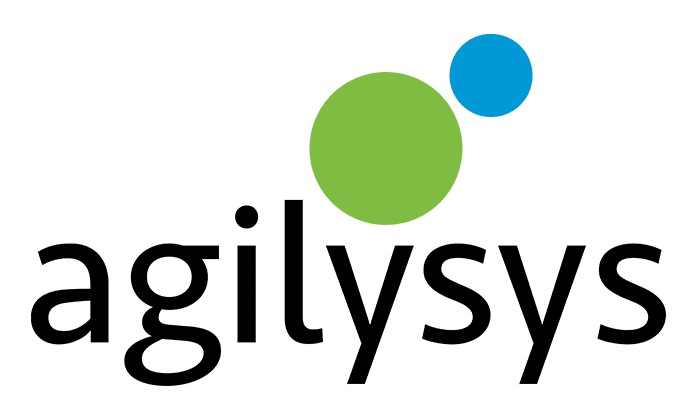
- Solutions
- Food & Beverage Ecosystem
Food & Beverage Ecosystem
Optimizing food & beverage operations and profitability demands a flexible, enterprise-class point-of-sale system. Is yours up to the task?
Go- Hospitality & Leisure Ecosystem
Hospitality & Leisure Ecosystem
From an individual location to an enterprise chain, get the most modern, mobile solution for managing your hospitality business
Go
- Inventory & Procurement Ecosystem
Inventory & Procurement Ecosystem
Designed to optimize foodservice and retail inventory and procurement operations for hotels, resorts, universities, restaurants and others.
Go
- Professional Services
Professional Services
Hospitality businesses are global, 24/7 operations with complex technology demands. You don’t have to go it alone.
Go
- Solution Studios
- Hotels
Hotels
Whether you operate a single boutique location or a large hotel chain, there’s an Agilysys hotel solution for you.
Go- Resorts
Resorts
Whether you operate a single boutique location or a large complex resort, your property is a unique operation that requires robust solutions supported by an experienced technology partner
Go
- Casinos
Casinos
You’re more than a gaming operation. You’re a full-service casino resort property and success isn’t about playing the odds, it’s about making the most of every revenue opportunity.
Go
- Tribal Gaming
Tribal Gaming
A leader in casino hospitality management solutions who respects the sovereignty of your nation.
Go
- Cruise Lines
Cruise Lines
Smooth seas ahead: technology solutions from Agilysys, a leader in cruise management systems.
Go
- Higher Education
- Corporate Dining
Corporate Dining
Identify emerging dining trends while aligning coverage with demand and capturing more revenue.
Go
- Healthcare
Healthcare
Delight patients & visitors, retain staff and grow margins with a suite of hospitality solutions for healthcare environments.
Go
- Life Plan Communities
- Foodservice Management
Foodservice Management
End-to-end foodservice management software solutions for optimum productivity and profitability.
Go
- Stadiums
- Restaurants
- Airports
Airports
Optimizing dozens of food & beverage outlets throughout your facility demands world-class POS performance combined with real-time operating insights.
Go
- Resorts
- Resources
- Articles
Articles
Access our library and read about the latest in emerging technology and other hospitality trends. Find tips and insights on accelerating business growth and improving guest satisfaction.
Go- Customer Stories
Customer Stories
Learn why so many businesses, small and large, partner with Agilysys for their hospitality technology needs.
Go
- Customer Videos
Customer Videos
Watch and learn what Agilysys customers have to say about their experiences with our solutions.
Go
- Product Resources
Product Resources
An in-depth collection of product information and datasheets. Read about the latest in hospitality technology features designed to solve the challenges faced by hospitality professionals around the globe.
Go
- Product Showcase
Product Showcase
Hear from industry professionals about the latest advancements, including tips and tricks, in hospitality and emerging technologies. Check out the library of demo videos and webinar recordings.
Go
- Webinars
Webinars
Watch and learn about the latest in successful technology trends and hear from hospitality professionals in this selection of interactive videos.
Go
- Industry Reports
Industry Reports
Important research and studies from across the hospitality industry. Find out what thought leaders are saying.
Go
- Customer Stories
- Company
- Leadership
- Solution Partners
Solution Partners
Agilysys has a broad collection of partners and APIs to help you assemble the perfect solution for you.
Go
- Our Customers
Our Customers
Discover how Agilysys customers like you are using our solutions to improve their business and guest experience.
Go
- Investor Relations
- News
- Events
Events
With the Agilysys commitment to 100% Hospitality solutions, we take industry events and conferences seriously. Please see where you can find Agilysys to learn more.
Go
- Career
- FAQS
FAQS
Go
- Solution Partners
- Support
- Contact Support
- Microsoft Patch Testing
Microsoft Patch Testing
See what Microsoft products and versions are currently support by Agilysys.
Go
- Payment Center
- RMA Requests
- Supply Order
Supply Order
Go
- Hospitality IQ
Hospitality IQ
Go
- Knowledge Center
Knowledge Center
Go
- Microsoft Patch Testing
- Blogs
- MyAgilysys
-
 Get a Demo
Get a Demo 877 369 6208
877 369 6208
×Home
☰- Explore
WHAT'S THE BUZZ IN HOSPITALITY?
Why Does my University Need a Foodservice Management System?
Most individuals are comfortable using their mobile devices or laptops to order rides, groceries and meals, and that's especially true for college students. They are used to an on-demand lifestyle where they can order something and receive it in a short period of time, and they expect that from their college experience too. Today's campuses are implementing foodservice management systems (FSM) to provide students, faculty members and staff with several flexible meal purchase options that can be customized to their preferences and the time they have available. These FSM options are not only providing a convenience to those on campus, they are helping these higher education facilities improve operational efficiency, better manage food costs and labor needs, and reduce food waste.
Now students and faculty can choose how they access, order, pay for, and receive their meals on campus. Gone are the days of missing dinner because they were late getting to the dining hall before it closed. Technology providers have simplified food and beverage ordering (F&B) from anywhere on campus, and they are offering students and faculty a personalized dining experience through customization.

How Many People Need Access to Foodservice on College Campuses Today?
For the academic year 2021-2022, nearly 20.2 million students were enrolled for undergraduate degrees in the United States. When you see that a college like Oregon Health and Science University has as many as one staff member for every student in 2023, that is a huge number of meal plans that these campuses could be offering – and a big opportunity to increase revenue by better managing foodservice campuswide.
Taking time to grab a meal can be a challenge for students and staff when you are looking at transportation limitations, class schedules, faculty and department meetings, and extracurricular activities like sports or part-time jobs. In order to help students and faculty optimize the time they have available, college campuses are offering services such as 24-hour grab-and-go markets with self-serve kiosks, mobile ordering including contactless payment, pick-up or delivery for food orders, and the old standby of a full-service dining hall for those who have time to take a break and eat on-site. These solutions were all built specifically to accommodate the different scenarios a student or faculty member might face on a day-to-day basis and make their experiences and their food choices better.
Student #1: Wants to see what the dining hall has tonight, meet friends, and enjoy a leisurely dinner
Who doesn't enjoy a leisurely dinner? When students have extra time, they can take a break during their day and meet friends at the dining hall. They have the luxury of walking through the facility to choose different items, and then pay for them through contactless payment using their student ID or another form accepted by the school like a credit card or Apple Pay®.
Student #2: Is meeting a study group so they choose mobile ordering and pick up lunch on the way
Through easy-to-access menus, students, staff and faculty can view nutritional information and ingredients, select what they would like, complete their order through simple and secure electronic payment via their mobile device or laptop, and it will be ready for pickup at their assigned time and location.

Managed Foodservice
End-to-end managed foodservice software solutions for optimum productivity and profitability.
Student #3: Has limited time to grab dinner because it's finals week so they opt for mobile ordering and delivery to their dormSometimes it's not that easy to break away and delivery is the most convenient option. Students and faculty alike can access their school accounts online or through the school’s app, select a food outlet that offers delivery, pay at the end of their order, and receive their order without interrupting their schedule.
Student #4: Is headed home from their part-time job after many outlets are closed and decides to swing by the micro market and use the kiosk for self checkout and grab-and-go service
Students and faculty can't always predict when they will be available after a class, study session or when their work day ends. With the flexibility that micro markets provide, they have access to food and beverage (F&B) items 24/7, and they do not have to wait for a staff member to help them. Features like self checkout through kiosks that scan all items on your tray, ignore things like your keys and wallet, total your bill and seamlessly accept payment, alleviate the stress caused by unpredictable schedules and late or off-hour commitments. For campuses that offer a variety of FSM options that cater to different schedules and preferences, students and faculty won't have to go hungry or resort to costly off-campus restaurants.
It's Not Just the Students and Faculty Who Benefit from Foodservice Management Software
Campus food departments can easily view and analyze the most popular menu choices, and through recipe management and inventory and procurement capabilities, help the university decrease food costs and limit food waste. Plus, foodservice staff can be allocated where they are needed most as there is no longer the need for a staff member to take an order directly or man a fixed terminal.

Point of Sale Solutions
Optimizing food & beverage operations and profitability demands a flexible, enterprise class point-of-sale system. Is yours up to the task?
These FSM solutions are built specifically for the use of higher education facilities and their needs, and they integrate seamlessly with leading student and faculty campus card systems and most existing point-of-sale systems (POS). If needed, campuses can update their POS system, as experienced solution providers offer customized POS systems for higher education restaurant and retail outlets that integrate directly with these FSM systems.
Colleges and universities are 24-hour environments, and the many people who walk the campuses have different food preferences, allergies, dietary requirements, and unpredictable schedules. Menus are accessible through these systems and offer ingredient details and nutritional information so the person can easily order something that is best for them the first time. The main goals of these solutions are to provide convenience and better meal options to students, faculty and staff, and also to help college foodservice teams be more productive, optimize the staff they have on campus, and increase revenue.
Universities are able to drive meal plan sales by offering a superior on-campus dining experience through proper foodservice management, and these solutions are elevating both the employee experience and that of the students, faculty and other staff members who access them.
Don't make foodservice the reason students and faculty decline the invitation to join your campus life. Implement an end-to-end managed foodservice software solution that supports the busy schedules and varied food preferences at your university.

2026 Hospitality Industry Conferences You Shouldn't Miss
Read More
The 2025 Global Hospitality Study
Download Study
The Guest Economy: Top 5 Hospitality Technology Predictions for 2026
Learn MoreCategories
- Contact Support
- Leadership
- Articles
- Hotels
- Food & Beverage Ecosystem




